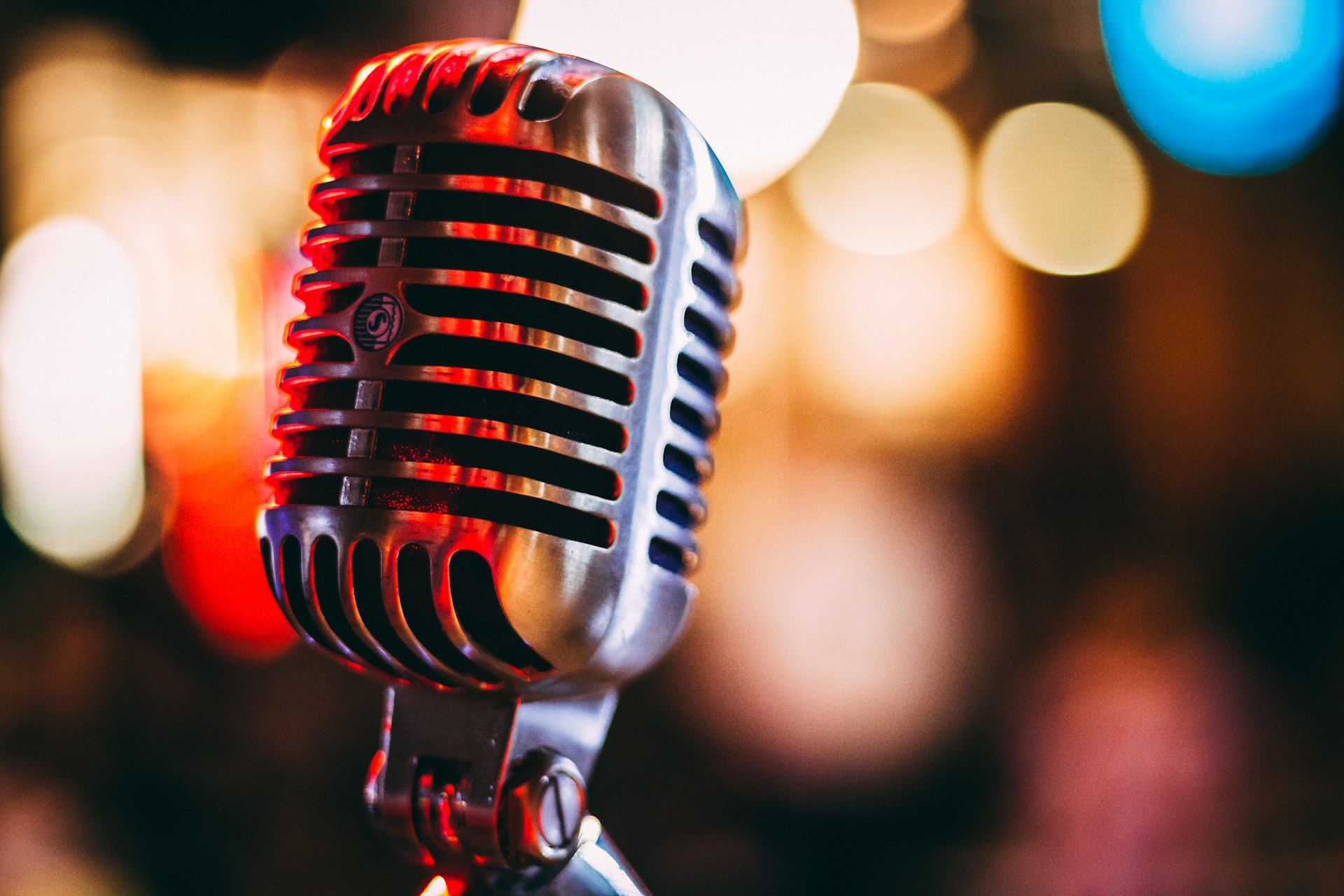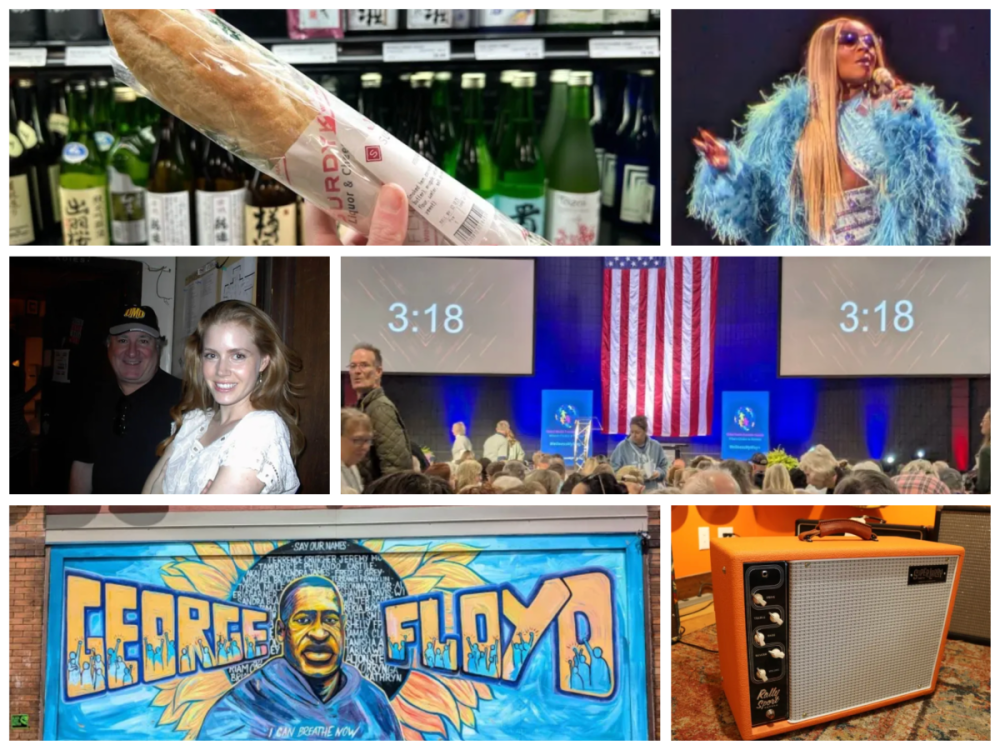Ever wondered why there’s so much Christian music on the radio? There’s one simple answer: The Educational Media Foundation.
The obliquely named organization, the second-largest radio chain in the nation, was the subject of an eye-opening feature in the latest issue of Rolling Stone written by local multimedia journalist/musician/Soft Cult Studio cofounder Katie Thornton. Based out of a broadcasting center in Nashville, EMF owns hundreds of cookie-cutter, Christian contemporary K-LOVE stations in all 50 states and boasted just shy of a billion dollars in net assets as of 2022. (There are nine K-LOVE frequencies in Minnesota alone.) But Thornton’s investigation is the first real exploration into how the media giant has used FCC loopholes and its nonprofit status to become a money-making machine.
From Rolling Stone:
EMF’s story isn’t just about bad music taking over the airwaves in service of a cultural vision that is overwhelmingly white, straight, and artistically regressive. It’s also the story of the near-demise of local radio—a longtime haven for new music, artistic outcasts, and political dialogue—at the hands of a tax-avoiding not-for-profit organization that appears to operate like a very-much-for-profit media mega-corporation. For decades, EMF has hidden behind a veneer of uncoolness while honing a signature technique: At big commercial stations and small, beloved community-radio stations alike, they’ve offered the owners an undeniable sum of money, wiped out the local presence, and replaced it with unmanned transmitters. Almost every new EMF station operates as a repeater with no local voices, few local jobs, and barely any overhead.
"To me, and a lot of other people who love radio, that's not radio living up to its potential," Thornton tells Racket. Traditionally, radio is a more accessible, relatively cheap to produce media format. It’s meant to be specific to a geographical region. "When you have companies like this taking over, that's not possible."
We sat down with Thornton to talk about EMF’s ethically dubious takeover, what it means for local listeners, and what the group hopes to gain besides just money. This conversation has been edited for length and clarity.
I have to tell you, I was reading this feature and having a real, "Why is nobody talking about this?" moment. It seems like I should have heard about EMF before!
That's a really big part of why I wanted to do this story. I've always been curious about this organization just from flipping through the radio dial. No matter what big city or small town I was in—whether I was barely picking up any stations in southern Minnesota or whether I was in Chicago—I would find several of these stations. And when I was doing some other reporting for a series I did on conservative talk radio, they kept coming up as sort of, as one of the interviewees in the story, Leah Payne, put it, "the soft conservatism counterpart."
I hear from people a lot of the time from people who are like, "I don't really listen to the radio." Can you talk about why this still matters, even if you don't?
I've also seen a lot of people say, "Well, who listens to the radio anyway?" And I guess for one, it's still a hugely, hugely influential medium. Four out of five Americans above the age of 12 listen to the radio on a weekly basis. That's one of the most widespread mediums. It has greater reach than television, and when it comes to news consumption, it's still about neck and neck with social media for how Americans get their news. The audience is shrinking a little bit, but not anywhere near as much as people probably think.
I think the other thing is: Radio can be a really big money-maker for folks who vertically integrate and syndicate their programming across the country. The Educational Media Foundation can do this especially well because they're a nonprofit, and when you're a nonprofit you get a bunch of legs up in the radio world, because the FCC put policies in place to help get nonprofit and noncommercial voices on the air. They've taken that to a place I think it's safe to say the early FCC never would have imagined, with those loopholes and legs up, and have been able to become this massive, billion-dollar corporation, primarily through their enterprises on the radio.
And the Twin Cities, Minnesota, we've not been immune to this.
Yes, so there were two stations that, a number of years ago, were bought by the Pohlads: the Go stations, Go95 and Go96. They were around for a handful of years—locally owned, locally operated, with local voices on the air. And after a few years they were bought by EMF in 2021. In the Twin Cities now, there's four EMF stations—or signals—and in the state of Minnesota, there's nine.
That's a lot!
It's a lot. They have a lot of stations everywhere. They're the second-largest station owner behind iHeart, which was formerly Clear Channel.
I lived in Boston for many years before moving to Minnesota, so the fact that your story opens on EMF's buyout and shutdown of WAAF, which had been a beloved rock station since the '70s, was the thing that made me realize, "Oh, they really are everywhere, and no station is safe."
And I do think that having a local connection on the radio is where radio excels, and what makes it great. So that story, I thought, was really moving. I listened to WAAF's final broadcast after talking to some of the DJs, and I made the mistake of listening to it at a coffee shop... I was just crying.
It’s an emotional lede: We meet these people who, this is what they've done for decades, this is what they're known for, and then it's like—too bad, switch flipped, now it's just generic Christian contemporary.
Literally, switch flipped, and then it's patched into this signal broadcast from one place all over the country. It's so sad to me.
For another tenuous local angle here, I’ll invoke the Replacements: You write about how EMF can take advantage of signals that are "left of the dial.”
The FCC has long set aside a small strip of the FM dial specifically for noncommercial and educational stations. These are the signals that go between 88.1 and 91.9, and the idea is that only nonprofits and noncommercial entities can compete for those signals. So usually you would hear a college station, or perhaps a tribal station, or a public radio station in this stretch of the band. A group like iHeart can't come in and buy it, because it's protected in that noncommercial range. But EMF is incorporated as a nonprofit, even though their CEO has brought in, in recent years, three-quarters of a million dollars annually. So they can come in and offer really high, almost iHeart-level prices, because they are really massive, for what are supposed to be noncommercial, more localized stations. They have three signals in Minnesota that are in the noncommercial band.
Is this something that’s on any lawmaker’s agenda right now? Is there any movement to legislate it?
I'm a little bit surprised that hasn't happened. On the other hand, their growth on the radio dial... it's not recent recent. They've been around since the early '80s, but they've been exploding, really, since the '90s and 2000s, and they've been getting really big in recent years. And because a lot of their growth has been more recent—right now, the FCC doesn't make radio a top priority. In interviews I had done, folks had sort of described it to me as, "No one at the FCC is going to make a name for themselves in 2024 by doing something about radio."
The same question of, “Well, who listens to the radio anyway?”
And the radio dial has been being deregulated since the ’80s, allowing for greater consolidation in the industry. In the earliest days of commercial radio, the 1910s and 1920s, the FCC put in place policies that were intended to prevent the radio dial from getting bought up by a small handful of companies. They didn’t want any individual or company to have too much sway over the hearts and minds of the American people, which is a noble thing to do, but that’s been steadily eroded since the ’80s, especially since the ’90s.
One thing that they’ve kept in place is that there’s a limit on how many stations a single company can own in a single media market. A single company can’t own more than five signals or radio stations in a single media market. But the FCC never applied that rule to nonprofits. Probably because they never imagined such a massive nonprofit. And so in the San Jose area, EMF, according to one of my interviewees, operates on like eight frequencies, something that’s not possible for a commercial network, even iHeart.
What do you think—and there might not be one answer for this, or a straightforward answer for this—but what do you think their endgame is? Like what… does EMF want?
[Laughs.] That’s such a good question, and I’m a little bit hesitant to speculate, just because I tried really hard to get somebody from EMF to talk to me. I was really bummed, because as a journalist I pride myself on being able to talk to folks who are hard to talk to, and oftentimes I find it more compelling to hear people in their own voice.
But to stick with what I do know, what other people told me or what I was able to find online from folks who have been involved with EMF—the founder of the organization, who was no longer with the company at the time he said this, talked in an interview from 2022 about how EMF’s role in society was more important than ever, and how their massive, massive stature gives them this incredible power to, I think the quote was, “bring people back to god.” It became very clear in the things he said that followed that that was a very right-wing interpretation of what that means. He was sort of bashing the local city council for underfunding the police and spending the money on, in his words, gay pride-themed murals. So I think that’s pretty revealing, that in 2022, that’s what the founder of the organization was saying.
It goes back to what you said earlier about the stations, and the songs they play, being that “softer side” of a more Fox News conservatism.
Even though they’re very much not explicit about their politics, part of that, I think, is just pragmatic and legal—they’re a nonprofit, they can’t get involved in campaigns. If you take it at face value, it doesn’t necessarily look like a political organization. But artistically and culturally, the music they’re playing, the conversations they’re having in between songs, and even who they’re choosing to target and how they’re choosing to target them is very much promoting a sanitized cultural approach, a culturally conservative approach to art and music.
Creatively, it’s not boundary-pushing. Socially, it’s not boundary-pushing. There have been a lot of instances where artists who have come out have lost air time. I talked to an independent, queer Christian artist who’s been trying to get her music played on these stations for a long time, and it hasn’t happened. She was telling me that even from a spiritual perspective, there’s no room for any doubt, grappling with faith, anything like that. And it is often male artists, often white artists, it’s a very homogenized, boring type of music. And it’s catchy as hell—but you hate yourself for thinking that.







